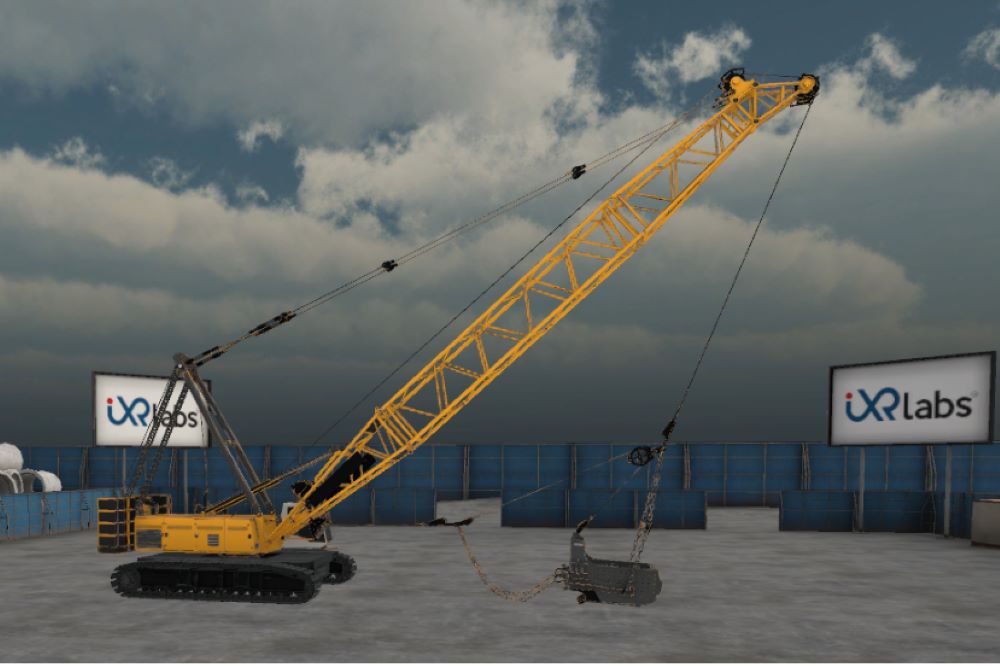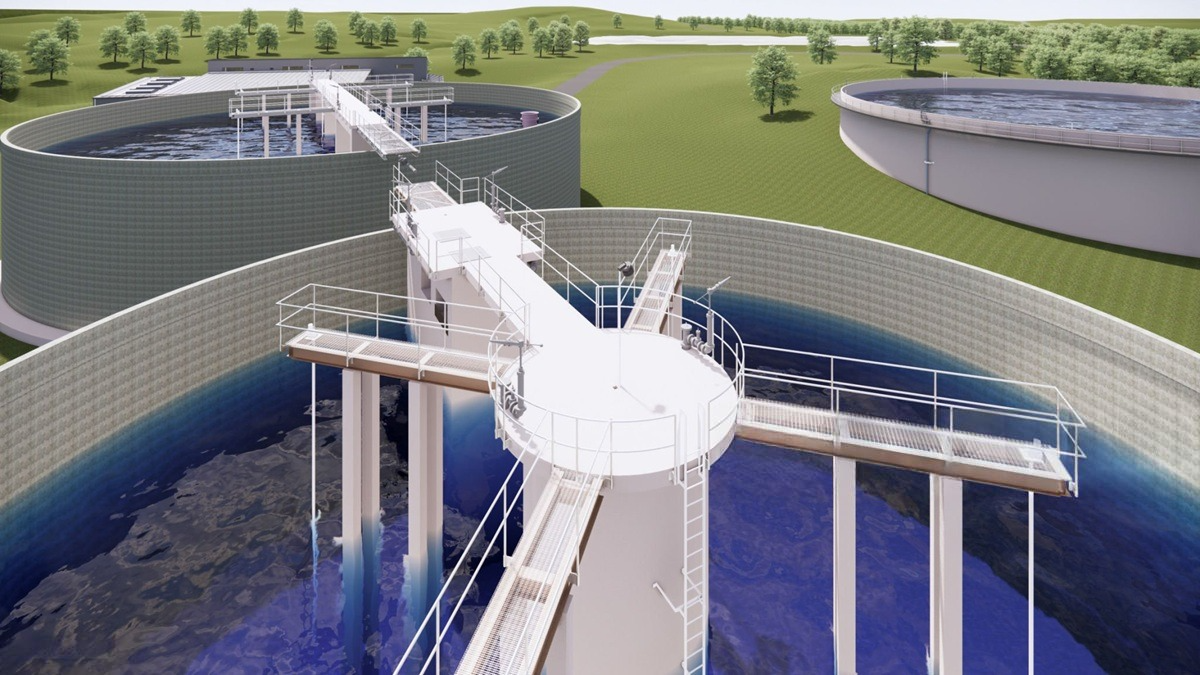5 Creative Ways to Teach Dragline Excavator

Here are 5 of the most creative ways to teach dragline excavators to the students in the classroom with the help of VR engineering.
Virtual Field Trips to Operating Sites
In the field of mining and construction, one machine that stands as the colossal giant is the dragline excavator, known for its unparalleled precision. But the challenges lie in preparing the budding engineers for using this machine.
Educators are often stuck on one question, i.e., how can we truly convey the magnificence and functionality of the machine to budding learners?
The answer is virtual reality.
Through the help of Virtual reality in engineering education, educators can create the exact replica of the construction site. By wearing the VR headsets, the students can be transported directly to the virtual operational sites where they can immerse themselves in the heart of action-packed scenarios.
Imagine standing in the middle of the sprawling landscapes of Peabody Energies' North Antelope Rochelle Mine. This mine is a true example of mining excellence on a global scale.
With an annual production exceeding 100 million tons of coal, the scale is truly staggering. With the help of VR-powered virtual industrial visits, students don't just read about dragline excavators, instead, to their surprise, they can witness these behemoths in action, deftly extracting layers of earth and coal with unmatched efficiency.
Interactive Anatomy Lessons
What? Anatomy in mining?
Yes. Making full use of the machine while mining involves having a deep understanding of the intricate components of a dragline excavator. Just imagine trying to operate a complex piece of machinery without knowing its parts. It's like navigating a maze blindfolded.
In virtual reality, educators can transform theoretical knowledge into tangible insights. For instance, let’s look at the iXR Lab’s Machine Simulator created in virtual reality.
The XR Lab’s Machine Simulator is a testament to technological marvels in engineering education. With these simulations, students aren't just reading about draglines, instead, they are diving deep into a virtual world where they can explore every nook and cranny of the Dragline Excavator 3d model.
In the virtual reality environment, from the colossal bucket that scoops vast amounts of earth to the delicate pulley systems orchestrating its movements, every component comes alive.
Simulated Operational Challenges
For heavy machinery like dragline excavators, Scramjet engine, petrol engine, etc, gaining theoretical knowledge is just the tip of the iceberg. The true test of the students lies when it comes to applying this knowledge in real-world scenarios.
VR technology enables educators to simulate operational challenges that push students beyond their comfort zones. Imagine confronting adverse weather conditions where visibility is compromised or tackling material density variations that demand nuanced operational adjustments.
These scenarios not only challenge the theoretical understanding of the students but also allow them to master their problem-solving acumen.
The VR training modules used by higher educational institutions to teach engineering through modern technology, particularly for dragline excavators, immerse students in hyper-realistic scenarios, like equipment malfunctions and fluctuating environmental conditions.
As students go through these challenges, they learn to adapt swiftly, optimizing dragline performance with finesse and precision.
This is the end goal. Right?
Collaborative Learning Environments
A lot of engineering projects require teamwork but because of the traditional teaching approach, educators often fail to create a collaborative environment for the students learning with the limitations of physical space.
VR as a solution to this problem, paves the way for immersive and collaborative learning experiences.
By harnessing the use of VR in engineering education, educators can cultivate a vibrant virtual learning community centred around dragline excavators.
Today, there are a lot of multi-user VR platforms that cross over the limitations of learning in a physical environment, allowing students to step into a shared digital space dedicated to exploration and discovery.
VR for higher education institutions epitomize collaborative learning and allows students to interact with other students synchronously in virtual classrooms.
Within this immersive environment, students collectively navigate the intricacies of dragline excavators, engaging in lively discussions, and collaboratively tackling challenges.
Such a dynamic interplay within the virtual classroom encourages teamwork and collaboration among students along with enhancing their communication skills, which are the essential competencies for success in today's interconnected world.
Moreover, the collaborative ethos of a virtual reality learning environment extends to project-based learning, where students learn to design virtual dragline excavators tailored for specific tasks.
"Want to Discover Creative Teaching Methods? Learn Effective Ways to Teach About Dragline Excavators and other machines Make Learning Exciting!"
Design Your Dragline Challenge
Creativity is cited as one of the top three skills required for success in the Fourth Industrial Revolution.
But, are we adding this skill to our students with traditional teaching approaches?
The answer must be a no but here is a solution. With the help of VR in civil engineering, educators can empower students to engineers and innovators.
Asking how?
Simply by introducing the “Design Your Dragline" challenge.
What is this challenge?
Design Your Dragline challenges enable students to conceptualize, design, and refine their dragline excavators in a virtual environment.
As they navigate the intricacies of design, students are not learning the art of crafting machines, instead, they are weaving together engineering principles with creative flair.
Within the virtual world, each design iteration becomes a testament to their problem-solving skills, critical thinking abilities, and innovative prowess.
Moreover, the "Design Your Dragline" challenge catalyzes the idea of collaborative learning, where students exchange ideas, offer feedback, and iterate upon designs collectively.
This collaborative spirit amplifies the learning experience, fostering a dynamic environment where knowledge acquisition intersects with hands-on application.
Conclusion
To conclude, embracing innovative tools like virtual reality, augmented reality or mixed reality in engineering education opens up a new dimension of learning where complex concepts like concrete mixer, dragline excavator or jet engine becomes easy to understand.
By incorporating the above-stated ways to teach dragline excavators, educators can provide students with immersive, hands-on experiences that go beyond the traditional approach.
It is clear that the future of education lies in the synergy of innovation and information, and VR is the key to unlocking that potential.
Now, the choice is yours. Do you want to go with the technological advancement or wait for the traditional way to completely vanish away?

.png)
.png)


.png)